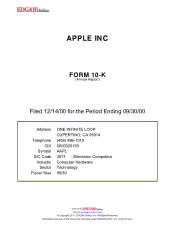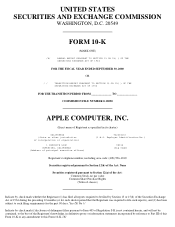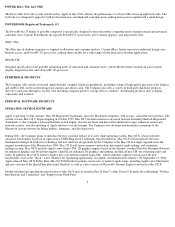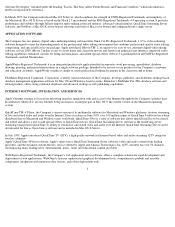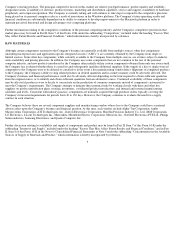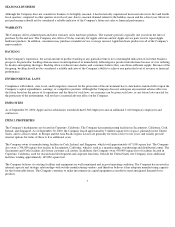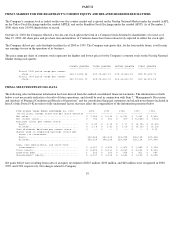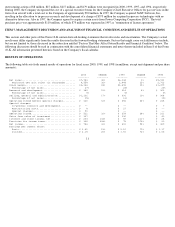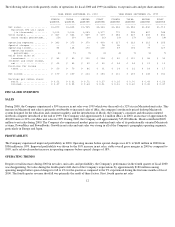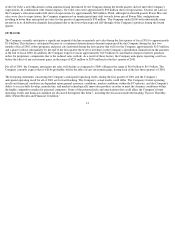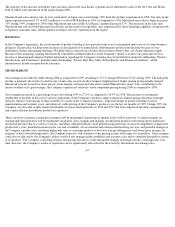Apple 2000 Annual Report Download - page 9
Download and view the complete annual report
Please find page 9 of the 2000 Apple annual report below. You can navigate through the pages in the report by either clicking on the pages listed below, or by using the keyword search tool below to find specific information within the annual report.RESEARCH AND DEVELOPMENT
Because the personal computer industry is characterized by rapid technological advances, the Company's ability to compete successfully is
heavily dependent upon its ability to ensure a continuing and timely flow of competitive products and technology to the marketplace. The
Company continues to develop new products and technologies and to enhance existing products in the areas of hardware and peripherals,
system software, applications software, networking and communications software and solutions, and the Internet. The Company's research and
development expenditures, before any charges for in-process research and development, totaled $380 million, $314 million, and $303 million
in 2000, 1999, and 1998, respectively.
PATENTS, TRADEMARKS, COPYRIGHTS AND LICENSES
The Company currently holds rights to patents and copyrights relating to certain aspects of its computer systems, peripheral systems, and
software. In addition, the Company has registered, and/or has applied to register, trademarks in the United States and a number of foreign
countries for "Apple-Registered Trademark-", the Apple silhouette logo, the Apple color logo, "Macintosh-Registered Trademark-," and
numerous other product trademarks. In 1986, the Company acquired ownership of the trademark "Macintosh" for use in connection with
computer products. Although the Company believes the ownership of such patents, copyrights, and trademarks is an important factor in its
business and that its success does depend in part on the ownership thereof, the Company relies primarily on the innovative skills, technical
competence, and marketing abilities of its personnel.
Many of the Company's products are designed to include intellectual property obtained from third parties. While it may be necessary in the
future to seek or renew licenses relating to various aspects of its products and business methods, the Company believes that based upon past
experience and industry practice, such licenses generally could be obtained on commercially reasonable terms. Because of technological
changes in the computer industry, current extensive patent coverage, and the rapid rate of issuance of new patents, it is possible certain
components of the Company's products and business methods may unknowingly infringe existing patents of others. The Company has from
time to time been notified that it may be infringing certain patents or other intellectual property rights of others. However, no litigation has
arisen out of any of these claims that has had, or is expected to have, an adverse impact on the Company's operating results and financial
condition. The Company believes that any necessary patent or other rights could be obtained on commercially reasonable terms. However,
there can be no assurance that the necessary licenses would be available on acceptable terms, if at all, or that the Company would prevail in any
such challenge. The failure to obtain necessary licenses or other rights, or litigation arising out of such claims, could adversely affect the
Company's results of operations and financial condition.
FOREIGN AND DOMESTIC OPERATIONS AND GEOGRAPHIC DATA
The United States represents the Company's largest geographic marketplace. Approximately 52% of the Company's net sales in fiscal 2000
came from operations inside the United States. Final assembly of products sold by the Company is conducted in the Company's manufacturing
facilities in Sacramento, California, Cork, Ireland, and Singapore and by external vendors in Taiwan, Korea, Mexico, the People's Republic of
China, and the Czech Republic. Margins on sales of Apple products in foreign countries, and on sales of products that include components
obtained from foreign suppliers, can be adversely affected by foreign currency exchange rate fluctuations and by international trade regulations,
including tariffs and antidumping penalties.
Information regarding financial data by geographic segment is set forth in
Part II, Item 8 of this Form 10-K in the Notes to Consolidated Financial
Statements at Note 10, "Segment Information and Geographic Data," which information is hereby incorporated by reference. Additional
information regarding the risks associated with international operations is set forth in Part II, Item 7 of this Form 10-K under the subheading
"Global Market Risks," included under the heading "Factors That May Affect Future Results and Financial Condition," which information is
hereby incorporated by reference.
6

